Since first announced, Code Vein gained fame as yet another Souslike game to be released in a time where many smaller studios were overwhelming the industry with them. It became known amongst players as the “Anime Souls”, and the developer and publisher Bandai Namco seemed to enjoy such fame, further exploring these comparisons in its marketing strategy and never really bothering to say otherwise. The final product, however, is much more enthralling than simply an “Anime Souls”. Code Vein is an incredible Action-RPG that draws much from Bandai Namco’s own games, such as the Tales of series, as well as borrowing many aspects from the Soulsborne franchise, delivering a refreshing touch to a genre that really needed it.
It’s a Souslike, alright
Code Vein is not shy of using the very same game structure as FromSoftware’s Soulsborne games. The similarities are striking:
- You can rest, level up, and perform other menu-centered activities when resting by a “mistle”, which also acts as your respawn point after dying;
- You open up shortcuts as you progress inside each area;
- You earn “haze” from defeating enemies, which can be used to level up your character, as well as a currency to upgrade your equipment and purchase consumable items;
- You lose your accumulated “haze” when killed and must trace back your steps to your death spot to recover it;
- Your weapons can be upgraded through different paths, each granting variations that may fit specific character builds better than others;
- Your weapons have “stat scaling” along with base stats, which puts complex calculations to determine the best weapon for your current character build;
- Your equipment’s weight can slow down your dodges;
- You fight a challenging boss at the end of each area;
- You can call for help from other online players.
It’s no mystery why the game was called “Anime Souls”. It is indeed using the very same structure of the Soulsborne games, making you progress through each area, earning experience, dying at some random fights, retracing your steps to recover your lost haze, fighting enemies with a combination of blocks and dodges, being ambushed at some points, and a lot more.
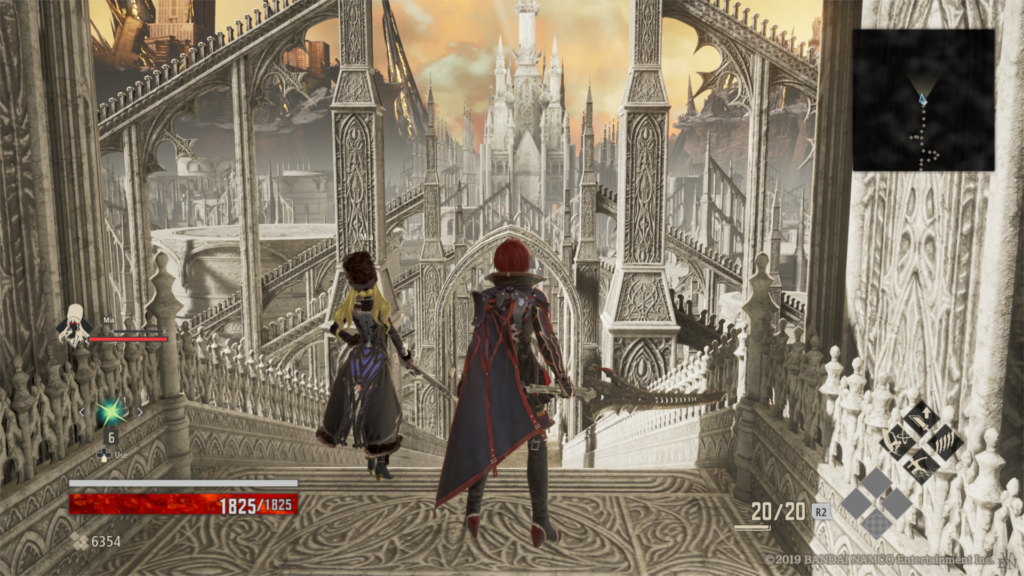
It differs at the most important aspects though
The Soulsborne games haven’t earned their fame and sprouted a horde of look-alikes because of their game structure. As a matter of fact, the structure of Soulsborne games are nothing more than modernized old-school metroidvanias and side-scrollers, where death meant retracing your steps for the entire level. What really made FromSoftware’s games shine was their brutality and their dark and gritty atmosphere, two instances where Code Vein is completely different.
Instead of the dark corridors of Boletaria, Code Vein offers a trip through post-apocalyptic ruins of a modern metropolis that is infested with hulking monsters carrying large weapons. Instead of a lone warrior wielding common shields and swords or hurling your average fireball, you are an immortal modified human who wields massive weapons and is capable of inhumans feats of strength, speed, and supernatural abilities. Instead of a hopeless empty world, you live amongst dozens of others like you, scavenging the city ruins for blood-sprouting trees, from which you get the blood you need to survive.
The atmosphere of Code Vein is nothing like the Soulsborne games, and this alone makes the entire experience of the game completely different, regardless of the structure similarities. Code Vein never tries to make you feel as if danger is around every corner, it veers away from photo-realistic representation of horrors and hopelessness by using colorful anime-like characters and a vastly artificial world with red and black themes akin to a mixture of steampunk and gothic motifs. You will walk around carrying your colossal sword or hammer and rush toward enemies with combos, flashy spells, and buffed by special powers. It’s a game that pushes you to attack, to be aggressive, and…
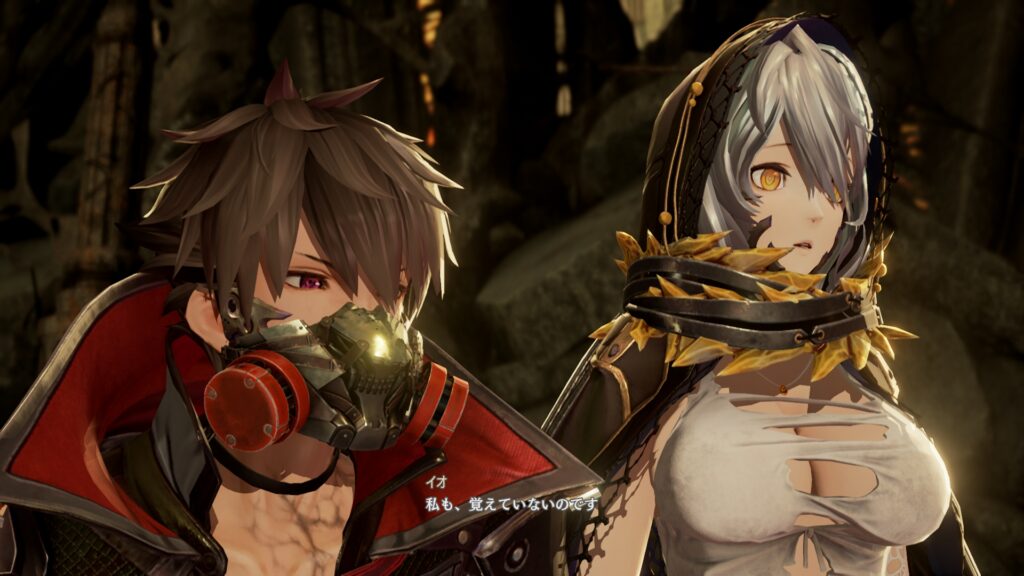
…where failure is not frustrating
Another major element of Soulsborne games is working around your frustration, especially when dealing with the game’s bosses. Those games typically force you to retrace a considerable amount of content before having a second chance at a boss, craving you for another attempt, but at the same time urging you to be careful with every step along the way.
Code Vein does nothing like it. Not only the game allows you to outrun most regular enemies on a map, almost every boss has a respawn point right before it. If you die against a boss, you are free to try again without worrying about random enemies in your path or walking through long corridors all over again. These differences are also vastly important to make Code Vein feel more like its own thing, allowing you to experiment after each failure to your liking. This also takes us to another important aspect of the game.
The Blood Codes
Code Vein does allow you to level up by spending “haze” at resting points, but this only means earning tiny increments to your HP, Stamina, and attack values. Every other statistic of your character is determined by your current Blood Code, which works basically as your character class and can be changed at any given time without any sort of limitation. These Blood Codes also offer abilities you can learn by playing as them, called “Gifts”. After learning each Gift, they become available for you to use in combination with any other Blood Code, creating an interesting playground for character builds and experimentation.
For example, you start with Fighter, Ranger, and Caster available to you. If you play as a Fighter, your Strength (which governs the attack power of most heavy weapons) is at B+ while your Willpower (which governs most offensive magic) is at D+, you also can set up Gifts that are specific to Fighter. As you play through the game as a Fighter, you will learn those Gifts, allowing you to use them even after changing your Blood Code to Caster later on. When you do change to Caster, your stats will also immediately change, making your Strength D+ and your Willpower B+.
Each Gift, however, is tied to a required stat value to use and is also classified as an Active Gift or Passive Gift. You can equip four Passive Gifts and up to eight Active Gifts, thus establishing an incredible system to experiment with hundreds of combinations to find what class and what Gifts work better for you. It’s a refreshing tool for the genre, giving you freedom and encouraging you to swap Blood Codes constantly to try something new. The game offers more than 30 Blood Codes, each with four to eight Gifts to learn. Yes, that’s a lot.
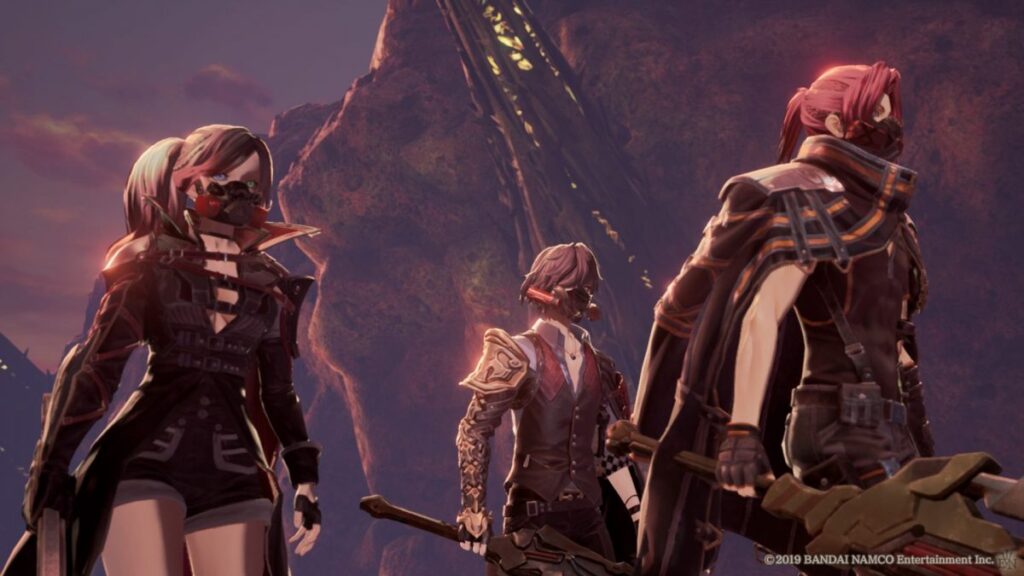
The Combat
While experimenting with the Blood Codes, you will fight. A LOT. Code Vein is a very combat-focused game, and its combat system is remarkable in many ways, allowing you to choose from greatswords, hammers, polearms, longswords, and bayonets to travel through city ruins and fight hundreds of the Lost.
This is yet another element that makes Code Vein stand on its own, offering a much more action-focused experience where your Gifts play a much bigger role. Instead of the gritty and careful combat of Soulsborne games, here you will unleash special attacks and powerful spells that have the potential to obliterate most common enemies. Those who have played any Tales game will feel quite at home here, combo-ing string of regular attacks with special attacks or linking one spell to the next. The only real change to this combat is the presence of a Stamina bar, limiting your regular actions.
The variety available in combat cannot be underestimated. Code Vein‘s combination of equipment, Blood Codes, and Gifts can give an array of options that make the replayability of the game truly high, especially taking into consideration the ability to swap character builds on the fly. You could play as a bulky tank, blocking most attacks and delivering single-powerful hits. You could try to play as a dashing marksman, keeping your distance to enemies and shooting them away, eventually striking at close range. You could be a pure physical powerhouse with a halberd or hammer. You could play as a swordsman with plenty of buffs and occasional spells. You could simply focus on blasting your foes away with powerful magic. The possibilities are many.
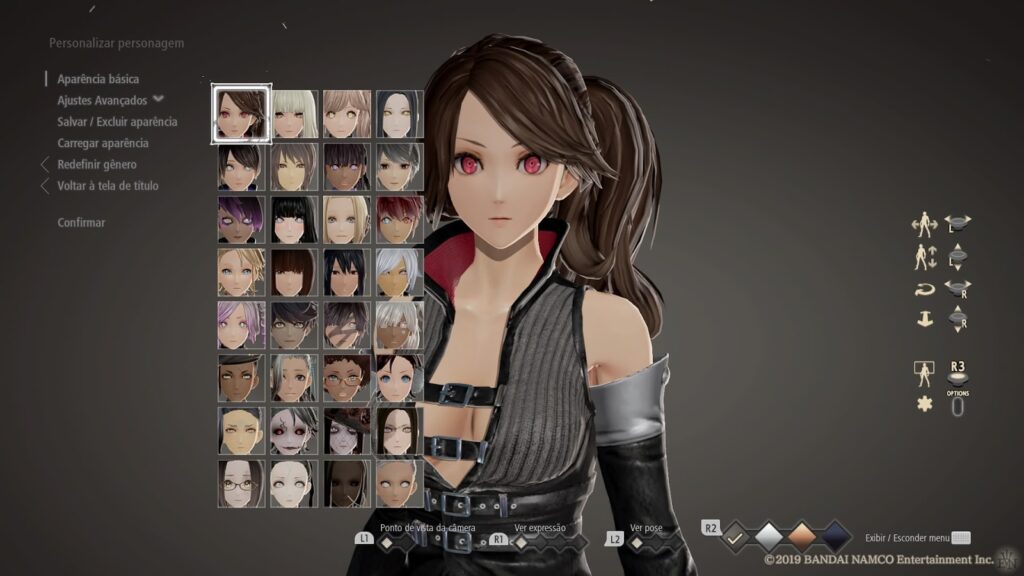
It’s a bit too much though
Despite bringing refreshing new mechanics to the subgenre it tries to improve, Code Vein is still trapped in ancient JRPG conventions that prevents it from reaching a higher level. The protagonist is a boring mute amnesiac anime boy or girl (with an incredible character creation tool, though), your allies are all pretty much tied to anime tropes of your everyday high-school show, and the main story is vastly poisoned by cliche’d villains and predictable outcomes.
Oh, and boobs, of course. I am all in for sexy outfits and beautiful waifus, but here it seems… too much. While the boys wear your steampunk-gothic clothes, some with heavy armor, stylish suits, and so on, nearly all the girls are wearing the bare minimum of clothes they can, with their massive boobs becoming real eye-catchers during every cutscene. The few girls with normal proportions usually have even more revealing clothes. It’s a bit disturbing and incoherent with the thematics. It’s a topic that doesn’t really bother me that much, but is certain to impact the experience for many players.
It’s also too… flat?
The graphics in general are ok. The character creation tool is simply incredible and there are some stylish clothing options, but overall the material quality of assets is really low and there is very little effort towards the physics of clothes and other accessories you wear. While zooming in NPCs or even your character, these lackluster aspects of the visual presentation become quite jarring. It can be ignored during gameplay though, something that cannot be said about the level design.
You see, Code Vein does offer an incredible combat with a vast array of options, but its maps are too simplistic. The overall level design of each area is uninspiring, as if they were just made at random. It feels really artificial and not very exciting to explore, a real contrast with the Soulsborne games it seeks inspiration from, which offer masterful level designs where it feels natural and urges you to walk around. What this means for combat is that everything happens on flat, open spaces.
You will likely dodge and block enemies, but rarely will the place where you fight affect you. Despite an occasional cliff or a level with firewalls and burning ground, you will deal with enemies in places where only you and them can be interacted with. This becomes even more unexciting for the boss fights, which all happen in flat arenas and you rarely have to deal with special mechanics other than dodge, block, and attack. It’s perhaps the same reason why I haven’t felt inspired by old Monster Hunter games, God Eater, and many other similar games: the fights never interact with the setting. Considering this is a game by well-known developer Bandai Namco, I was expecting more to combat than that, perhaps with more verticality to boss fights such as in Monster Hunter: World, or maybe special mechanics such as in Demon’s Souls.
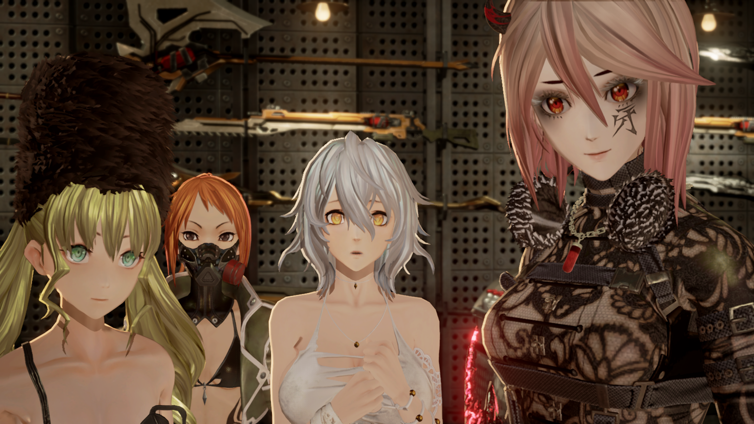
It gets allies, though
The flat open areas of combat only have an additional degree of chaos and replayability to them because Code Vein offers a companion to your journey: an AI-controlled NPC that will always be alongside you, fighting monsters, drawing their attention, and even healing you. These companions help to make the game less frustrating and more varied, as combat gains a degree of unpredictability which can be used to your advantage. They also help to make Code Vein’s combat experience more akin to Tales than other Soulsborne games. Those who enjoy the repetition and are up for a real deadly challenge can opt out of having a companion and tackle the game’s levels and bosses alone.
You can only bring one companion with you, but there are multiple options for you to choose from, some of them being tanky and resilient enough, others being fragile but constantly attacking from long range, some who have decent buffs for you, and so on. It adds another layer of customization to the game, which, when combined with your Blood Code, Gifts, and equipment, really makes things interesting.
It’s a solid baseline
Far from your average Soulslike game, Code Vein manages to create its own intensity and explore its own ideas while borrowing the formula that became popular in recent years. It’s an action-packed experience with flashy design, fueled by solid combat, supporting an amazing class-based system, and opting out of working around player’s frustrations by adopting modern game design choices. It also packs narrative elements to its story, with complete cutscenes, plenty of dialogues, and allowing you to interact with other NPCs as if playing your average JRPG, something usually kept out of Soulsborne games and their lookalikes.
If you ever felt that a Soulsborne game was wrong to you at some level, but was invested in its structure and mechanics, perhaps Code Vein is the perfect game for you. However, if what you’ve enjoyed in Soulsborne games were their brutality and atmosphere, Code Vein may disappoint you by playing nothing like them.
As a fan of action-RPGs, you can simply enjoy Code Vein for being what it is. That, however, if you can get past the overly exaggerated anime template that goes along with it.
Detailed Scores
-
Production
-
Content
-
Polish
-
Concept
-
Fun
